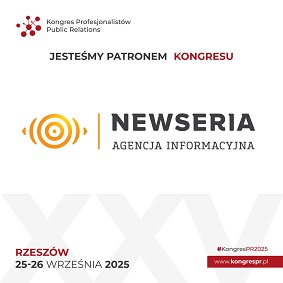Thor Dynamics Deepens AI Partnership with NVIDIA to Advance Swarm Defense Capabilities
Laser Armor™ System Enhanced with NVIDIA-Powered Simulation, Embedded AI, and Reinforcement Learning
Laser Armor™ is a next-generation directed energy solution designed to detect, track, and neutralize airborne threats within seconds. Powered by Thor’s proprietary Laser Engines and driven by intelligent sensor fusion, the system delivers precise, scalable protection for high-value targets with minimal collateral impact. As drone swarm attacks become increasingly sophisticated and accessible, the need for agile, high-speed response systems has never been more urgent.
“NVIDIA Inception is a game-changer for Thor Dynamics as we continue to innovate in AI-driven drone swarm defense,” said Gleb Chuvpilo, Co-Founder at Thor Dynamics. “By combining NVIDIA’s advanced AI and compute resources with our high-power directed energy systems, we are accelerating our mission to protect global infrastructure from evolving aerial threats.”
Why Directed Energy is the Future of Counter-Drone Defense
Unlike traditional kinetic or jamming-based countermeasures, directed energy weapons offer speed-of-light engagement, pinpoint accuracy, and virtually unlimited shots with minimal cost per intercept. Laser systems like Laser Armor™ neutralize drones in-flight without reloading or physical ammunition, and without risking nearby personnel or structures — making them ideal for sensitive sites such as power plants, data centers, airports, and military bases.
Laser Armor™ is purpose-built to meet the rising challenge of drone swarm warfare, where dozens or even hundreds of UAVs may be deployed in coordinated attacks designed to overwhelm conventional defenses. Thor’s integration of NVIDIA technology enables the system to not only keep pace — but stay ahead.
Key Areas of Collaboration with NVIDIA
Thor Dynamics and NVIDIA are working across three strategic areas to bolster Laser Armor™:
1. Simulation & Reinforcement Learning – Using NVIDIA Isaac Sim and Isaac Lab, Thor simulates complex drone attack scenarios to train AI agents using Reinforcement Learning (RL). This virtual training environment allows the system to learn optimal threat engagement strategies and improve over time — without the risks or costs of physical testing.
2. Edge AI Processing – Thor Dynamics is embedding NVIDIA Jetson processors directly into its systems, enabling high-speed sensor fusion and real-time decision-making at the edge. These compact, power-efficient modules dramatically reduce latency and increase autonomy, allowing Laser Armor™ to respond instantly to dynamic threats in the field — even in GPS-denied or cloud-disconnected environments.
3. Ecosystem Collaboration – As a member of NVIDIA Inception, Thor Dynamics collaborates with a global community of AI innovators in defense, autonomy, and robotics. This access to cutting-edge advancements in machine learning, computer vision, and embedded systems accelerates Thor’s product development roadmap and supports the creation of next-generation counter-swarm technologies.
With NVIDIA’s world-class compute infrastructure and AI toolchain, Thor Dynamics is evolving Laser Armor™ into a fully autonomous, continuously learning defense system — one capable of adapting to tomorrow’s drone threats in real time.
To learn more about Laser Armor™, request a live demo, or explore partnership opportunities, visit www.thordynamics.com.
About Thor Dynamics
Headquartered in Orlando, Florida, with a European base in Finland, Thor Dynamics develops advanced directed energy systems purpose-built for counter-drone and counter-swarm defense. Through deep partnerships with industry leaders like NVIDIA, Thor harnesses the latest in AI and high-performance computing to protect global infrastructure and national security in the age of autonomous threats.
Gleb Chuvpilo
Thor Dynamics
email us here
Visit us on social media:
LinkedIn
Legal Disclaimer:
EIN Presswire provides this news content "as is" without warranty of any kind. We do not accept any responsibility or liability for the accuracy, content, images, videos, licenses, completeness, legality, or reliability of the information contained in this article. If you have any complaints or copyright issues related to this article, kindly contact the author above.
Bounce Online Solidifies Position as One of South Africa's Leading Online DJ Equipment Retailers
One Click SEO Unveils One Click GEO & Aura: Pioneering Brand Visibility in the AI-First Search Economy
Arun Kumar Palathumpattu Thankappan Leads Public Sector Innovation with Amorphic by Cloudwick
Więcej ważnych informacji
 Jedynka Newserii
Jedynka Newserii

 Jedynka Newserii
Jedynka Newserii

Handel

Mercosur to tylko wierzchołek góry lodowej. UE ma ponad 40 umów handlowych, które mogą destabilizować rynek rolny
Umowa handlowa między UE a krajami Mercosur może znacząco zaburzyć konkurencję na rynku rolnym i osłabić pozycję unijnych, w tym polskich, producentów – ostrzegają rolnicy i producenci żywności. Umowie sprzeciwia się część krajów unijnych, które domagają się klauzuli ochronnych oraz limitów importowych. – Problemem jest jednak nie tylko ta konkretna umowa. Chodzi o cały system wolnego handlu, który się kumuluje z dziesiątek innych porozumień – podkreśla Andrzej Gantner, wiceprezes Polskiej Federacji Producentów Żywności.
Firma
Dzięki zdalnej weryfikacji tożsamości z wykorzystaniem AI firmy zminimalizowały liczbę oszustw. Rozwiązania wykorzystuje głównie sektor finansowy

Z najnowszych danych Eurostatu wynika, że w 2024 roku 5,9 proc. polskich firm korzystało z rozwiązań z zakresu sztucznej inteligencji. W 2023 roku był to odsetek na poziomie 3,67 proc. Wciąż jednak jest to wynik poniżej średniej unijnej, która wyniosła 13,48 proc. Jednym z obszarów, który cieszy się coraz większym zainteresowaniem wśród przedsiębiorców, jest weryfikacja tożsamości przez AI, zwłaszcza w takich branżach jak bankowość, ubezpieczenia czy turystyka. Jej zastosowanie ma na celu głównie przeciwdziałać oszustwom i spełniać wymogi regulacyjne.
Prawo
Daniel Obajtek: Własne wydobycie i operacyjne magazyny to filary bezpieczeństwa. Zgoda na magazyny gazu poza krajem to rezygnacja z suwerenności energetycznej

Były prezes Orlenu ostrzega przed zmianami w ustawie o zapasach ropy naftowej, produktów naftowych i gazu ziemnego. Jego zdaniem przygotowana przez rząd nowelizacja tzw. ustawy magazynowej i ujednolicanie unijnej polityki energetycznej to zagrożenie dla bezpieczeństwa energetycznego Polski. W jego opinii tylko silna spółka narodowa, własne wydobycie, krajowe magazyny i zbilansowany miks energetyczny zapewnią Polsce bezpieczeństwo i konkurencyjność.
Partner serwisu
Szkolenia

Akademia Newserii
Akademia Newserii to projekt, w ramach którego najlepsi polscy dziennikarze biznesowi, giełdowi oraz lifestylowi, a także szkoleniowcy z wieloletnim doświadczeniem dzielą się swoją wiedzą nt. pracy z mediami.





![Nestlé w Polsce podsumowuje wpływ na krajową gospodarkę. Firma wygenerowała 0,6 proc. polskiego PKB [DEPESZA]](https://www.newseria.pl/files/1097841585/fabryka-nesquik_1,w_85,r_png,_small.png)



.gif)

 |
| |
| |
|